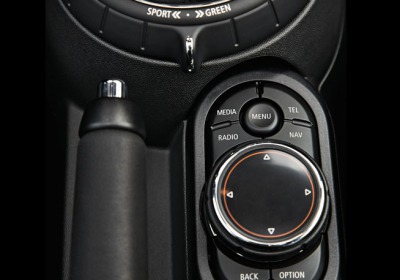Mini Cooper first pictures (2013) BMW’s new Mini goes back to the future
Mon, 18 Nov 2013By Phil McNamara
First Official Pictures
18 November 2013 09:00
Here comes BMW’s third new Mini since it relaunched the brand in 2001. But its appearance seems resolutely stuck in time, like John and Jackie Kennedy in Zapruder’s film of the Dallas motorcade, or like the fans who berated Bob Dylan for going electric.
There are no design surprises: the bodysides are curvy and more crisply pressed, the rear lamps supersized, otherwise the floating roof, wraparound chrome piping and wheel-at-each corner stance are all present and correct. ‘We need to be careful,’ BMW Group design director Adrian van Hooydonk told CAR. ‘Mini doesn’t have customers, it has fans: they know what makes a Mini more than anyone, and we want to keep the fans happy.’
Van Hooydonk points out that this Mini is recognisably new, unlike the sidestep from BMW Mk1 to Mk2. For that we can thank the hexagonal, one-piece grille that links BMW’s Mk3 with the 2001 car and BMC’s 1959 original. An unfortunate side effect is that the new Mini Cooper’s face – staring headlamp eyes, stripy nostrils and gaping mouth – resembles a cold, dead fish staring out from a supermarket counter, at least to my eyes.
Not that van Hooydonk sees it that way. ‘The new Mini has a friendly face, and full surfaces, crisp lines, sharp details, a bit more precision,’ he says.
It’s unlikely that the new Mini’s exterior design will pull in new fans, but with 2.5million global customers since 2001, BMW will be happy to retain the fanbase. The cockpit is, however, a huge step forward: it reminds me of Audi’s Mk2 TT with its snug feel and classy centre console detailing. Despite pressures from US impact regulations designed to protect occupants who aren’t wearing seatbelts, Mini has retained the iconic flick switches in the centre stack. Indeed, it’s added a start lever, which encourages you to fire it up by pulsing like a Jaguar ignition button.
Again at the behest of customers, the electric window winders have moved onto the doors. But the speedo breaks with tradition by being mounted conventionally behind the wheel: the central circle houses a screen running all the infotainment. Data will be available in the driver’s eyeline if the pop-up head up display is specified.
Interior quality looks a compelling reason to buy, as should driving dynamics – assuming the new hatch’s UKL1 architecture lives up to expectations. ‘The three-door hatch [offers] driving pleasure, enhanced go kart-feel, and a lot of new connectivity which is important for the target group. We’ve made major progress on quality,’ said Peter Schwarzenbauer, Mini chief.
The new architecture will underpin a host of front-drive BMWs, raising the dynamic stakes and unlocking better quality for customers at lower cost for BMW. Throw in new three- and four-cylinder turbo engines and the new Mini promises 10% better performance and 20% lower consumption. While the looks may be anchored in history, the technology should feel like the future.
By Phil McNamara

